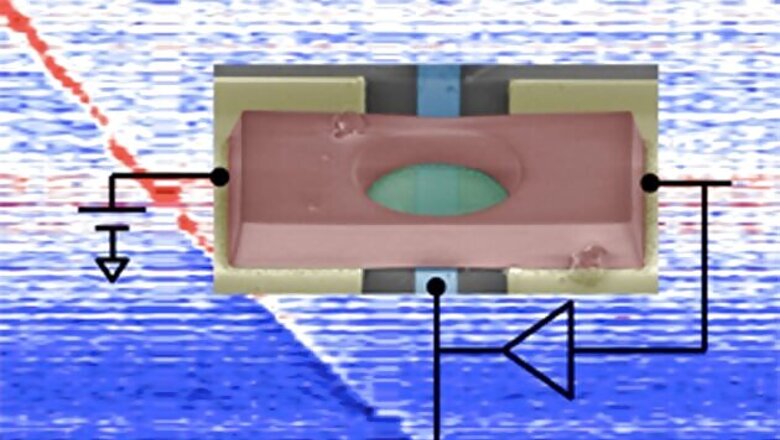
views
New York: US researchers have used graphene to create the world's smallest FM radio transmitter - a nano-mechanical system that can create FM signals.
A team of researchers from Columbia University, led by Mechanical Engineering Professor James Hone and Electrical Engineering Professor Kenneth Shepard, took advantage of graphene's special properties - its mechanical strength and electrical conduction - and developed a nano-mechanical system that can create FM signals.
"This work is significant in that it demonstrates an application of graphene that cannot be achieved using conventional materials," Hone said.
"And it's an important first step in advancing wireless signal processing and designing ultrathin, efficient cell phones. Our devices are much smaller than any other sources of radio signals, and can be put on the same chip that's used for data processing," Hone added.
Graphene, a single atomic layer of carbon, is the strongest material known to man, and also has electrical properties superior to the silicon used to make the chips found in modern electronics.
The combination of these properties makes graphene an ideal material for nanoelectromechanical systems (NEMS), which are scaled-down versions of the microelectromechanical systems (MEMS) used widely for sensing of vibration and acceleration.
In the new study, the team took advantage of graphene's mechanical 'stretchability' to tune the output frequency of their custom oscillator, creating a nanomechanical version of an electronic component known as a voltage controlled oscillator (VCO).
With a VCO, explained Hone, it is easy to generate a frequency-modulated (FM) signal, exactly what is used for FM radio broadcasting.
The team built a graphene NEMS whose frequency was about 100 megahertz, which lies right in the middle of the FM radio band (87.7 to 108 MHz).
They used low-frequency musical signals (both pure tones and songs from a smartphone) to modulate the 100 MHz carrier signal from the graphene, and then retrieved the musical signals again using an ordinary FM radio receiver.
"This device is by far the smallest system that can create such FM signals," said Hone.
While graphene NEMS will not be used to replace conventional radio transmitters, they have many applications in wireless signal processing, researchers said. The study is published in the journal Nature Nanotechnology.


















Comments
0 comment